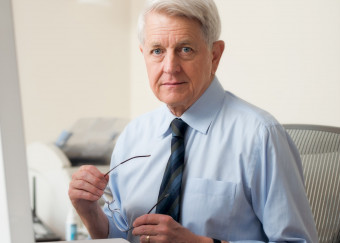The Power of a Transformative Idea
Thomas Neff BA ’65 devises an elegant plan to transform Russian warheads into American electricity.
Thomas Neff BA’65 helps turn Russian warheads into American electricity.
By Jeffrey Lott
Photography by Peter Goldberg
Illustration by Esther Bunning
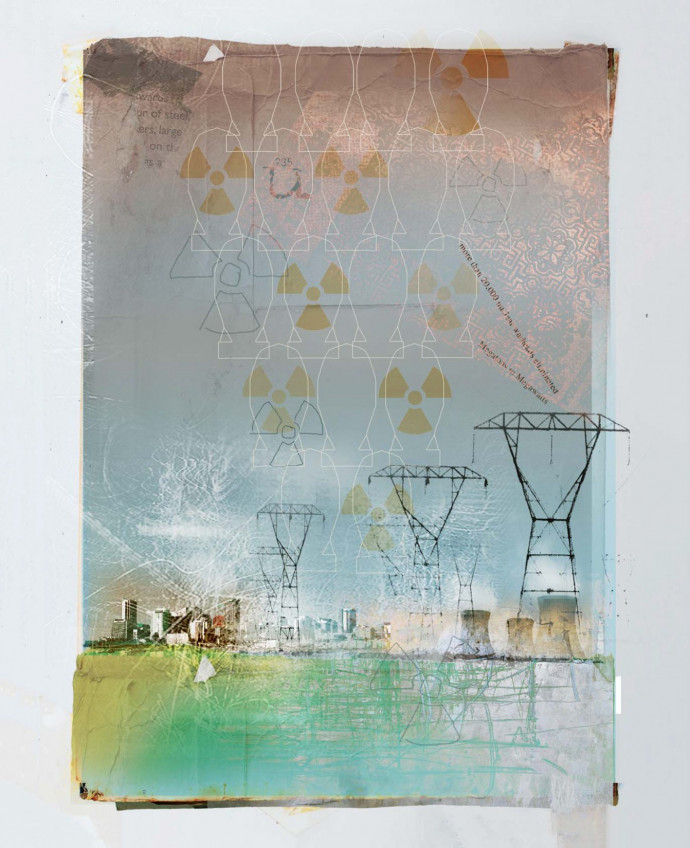
Like most Americans born in the 1940s, Thomas Neff BA ’65 remembers the “duck-and-cover” days. He recalls the siren tests, the Civil Defense ads, the emergency broadcast system, and Life magazine stories about nuclear fallout shelters. This was the national Cold War anxiety that Neff absorbed as a child in Portland, where his father taught at Lewis & Clark.
Even though Neff says Portland was “kind of remote” in the 1950s, “we had to go through all these nuclear attack drills in grade school and high school. At the time, I really didn’t understand how getting under my desk was going to do any good.”
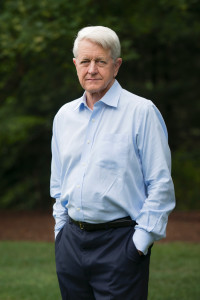
For Tom Neff, it was not a time to duck and cover. A scheme he proposed in an October 24, 1991, New York Times op-ed became a win-win solution to the nuclear weapons problem. And not only did he conceive of it, he put himself in a position to pitch it to a key Soviet official—a meeting that came about both by chance and by design.
Neff’s idea was so simple that it was almost dismissed as an impossibility by Washington. In essence, he based his plan on Russia’s economic self-interest. Neff calculated that the highly enriched uranium in a typical nuclear weapon could be “blended down” to make low-enriched fuel for nuclear reactors that was worth about $500,000 per weapon. If the United States were to buy this fuel, the Russians would be motivated to continue guarding their massive arsenal and paying their many nuclear scientists and technicians—not to build and maintain nuclear weapons but to dismantle them.
Under Secretary Gottemoeller calls Thomas Neff “the genius who pulled this whole thing together in a very skillful way. He had the idea, communicated it well, and sold it to top people on both sides.” Neff was “the complete package in terms of crystallizing the concept. Although there were years of implementation work and some difficult issues to work out, the idea itself was inherently so good that it survived all of this. And it has fulfilled its original promise—an amazing nonproliferation program with important benefits for both sides.”
“Thomas Neff was the genius who pulled this whole thing together. He had the idea, communicated it well, and sold it to top people on both sides.”Rose GottemoellerUnder Secretary of State for Arms Control and International Security
During the next 22 years—with Tom Neff’s constant attention —what came to be called the Megatons to Megawatts program actually worked. More than 20,000 Russian warheads—any one of which could have destroyed an American city—were converted into U.S. electricity, a deal ultimately worth $17 billion.
The final shipment of Russian fuel-grade uranium arrived in Baltimore in late 2013. Shortly thereafter, the Bulletin of the Atomic Scientists reported the little-known fact that “nearly half of the uranium burned in U.S. power plants during the past 20 years came from decommissioned Russian weapons.” This fuel supplied roughly 10 percent of all U.S. electricity during that period. And while the United States and Russia continue to spar today in what some have called a new Cold War, those nukes never got loose.
Neff, who is currently writing a book about his experiences, remembers 1950s Portland as a working-class town where “everybody around me was pretty much blue collar, working on just getting through life.” His father taught business courses at Lewis & Clark and was a small-time entrepreneur—starting several businesses and managing an apartment house that he built in nearby Lake Grove (now Lake Oswego).
Tom went to work at an early age, picking berries and beans. “Before migrant labor,” he recalls, “they let school out to pick the crops. By the time you were 12, the school bus would come and take you to the fields. You’d see all your classmates on the bus, and from 7 a.m. to 3 p.m. you’d pick—a nickel a flat for strawberries.”
Distinguished Alumnus Award
In honor of his significant achievements on the world stage, Lewis & Clark’s Board of Alumni has selected Thomas Neff as this year’s Distinguished Alumnus. Neff will receive his award at the Alumni Honors Banquet on February 20.
A good student, Neff graduated from Lake Oswego High School in 1961. He applied to Harvard, but his father wouldn’t fill out the financial aid forms. As a result, Neff ended up living at home and attending Lewis & Clark tuition free due to his father’s position. At the college, he took a wide range of courses while majoring in math and physics. He feels privileged to have had Elvy Fredrickson as a mathematics professor, observing that “she could have been at MIT or Stanford.” (Fredrickson taught at Lewis & Clark from 1946 until 1980. She passed away in 2008.)
A key mentor was Robert Dusenbery, a published poet who built the college’s English department in the decades following World War II, hiring fellow poets William Stafford and Vern Rutsala, both of whom taught Neff. Dusenbery stopped Neff on campus during the fall of his senior year to ask whether he might nominate him for a Danforth Fellowship—a full graduate-school scholarship. It turned out to be Neff’s long-awaited ticket out of Portland. After graduating at the top of his class in 1965, he moved to California to begin a doctoral program in physics at Stanford University.
So how does a Cold War kid from Portland end up imagining a key international deal that ends up destroying one-third of the world’s nuclear weapons arsenal? How did Thomas Neff become the right person in the right place at the right time— with such an elegant but practical idea? Looking back, nearly every aspect of his intellectual and social formation seemed to contribute to his being the right person. And every twist of his career seemed to carry him toward the right time and place— his October 19, 1991, encounter with Viktor Mikhailov, deputy minister of atomic power and industry and head of the Soviet nuclear weapons complex.
Academically at Stanford, he says, “I was in way over my head.” (He had actually completed his physics major at Lewis & Clark through self-study and a set of examinations.) The summer before leaving for Palo Alto, he says he acquired the physics books that were being used at Stanford and “worked through them.”
“It was the math I got at Lewis & Clark that saved me,” he says with a nod to Professor Fredrickson, “along with good physical intuition.” He earned a PhD in 1973 and went on to a postdoctoral fellowship at the University of California at Berkeley, planning an academic career.
Yet just as he had the right teachers and mentors at Lewis & Clark, Neff attracted some important attention at Stanford. “Out of the blue one day came something that really changed my life long term,” he says. It was a call from Wolfgang Panofsky, an internationally renowned particle physicist and director of the Stanford Linear Accelerator. Panofsky (known as “Pief”) was president-elect of the American Physical Society (APS) and was looking for an executive assistant. Would Neff take the job?
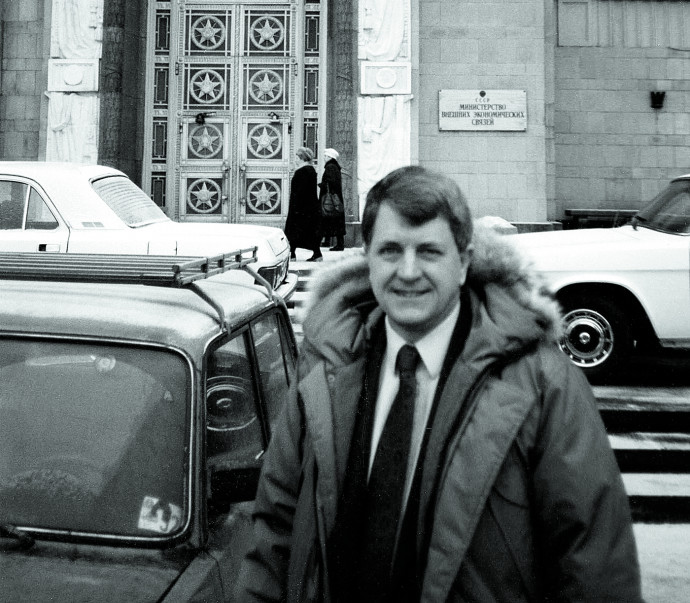
“I thought long and hard about that,” Neff says. “It meant putting my physics career on hold. But it was really about the best thing that ever happened to me.”
The “half-time” job thrust 29-year-old Tom Neff into the world of national science policy. “Pief didn’t have time to be president-elect of the APS, let alone its president, so he would send me to his meetings,” Neff says. “He was also an advisor to various parts of the government and a member of the Association of Presidents of Scientific Societies—where there were all these famous gray-beard guys—so I would go to those meetings for him too. I had to buy a suit for the first time, but I kept wearing my sandals.”
In the course of his work with Panofsky, Neff helped draft the legislation that led to the creation of the Department of Energy. And when Panofsky launched the APS Panel on Public Affairs in 1974, Neff became its program coordinator. In 1975, he moved to the Center for Theoretical Physics at Massachusetts Institute of Technology, where he continued physics research and assisted the next two chairs of the APS panel, Philip Morse and Herman Feshbach. During this period, he also served as chief staff officer for the Ford Foundation’s comprehensive Nuclear Energy Policy Study, which he later helped present to President Jimmy Carter and members of his cabinet.
In 1977, Neff was appointed director of MIT’s International Energy Studies program, a position he held until 1985, when he became a senior member of the institute’s Center for International Studies. Thus, when the time came to find a way to contain and destroy thousands of Soviet nuclear weapons, no one was better positioned to see the big picture than Tom Neff.
The deal wasn’t a slam dunk. But Neff’s Times op-ed, which he had circulated to key actors in advance of publication, got him an invitation to a nongovernmental bilateral meeting between American nuclear scientists and their Soviet counterparts. The Russians, led by Deputy Minister Mikhailov, were in Washington to discuss the technical details of implementing START 1— the historic July 1991 agreement to radically reduce the number of nuclear weapons deployed by the U.S. and Soviet Union.
The Soviet empire was financially ruined and on the brink of falling apart—mere weeks from its December 1991 demise— and the Russians were also in Washington looking for help.
Neff made sure he was in the right place to pitch his idea to the person who mattered. Following a short break in the talks, Neff noticed that Mikhailov had remained in the hallway with his interpreter—chain smoking. Seeing an opportunity to talk to the top Russian, Neff also stayed out of the meeting.
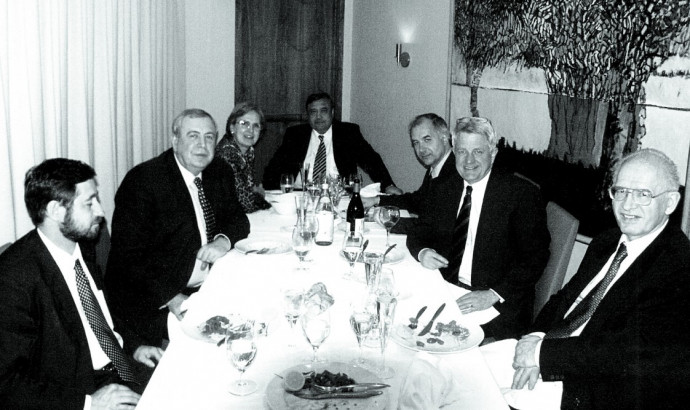
“I approached him in the hall to make my proposal, simply asking if he would be willing to sell fuel derived from [highly enriched uranium] in destroyed weapons to support his program,” Neff writes in a draft of his book. “Mikhailov’s response was that he was interested. I handed him a draft of the op-ed and the summary I had prepared, which Mikhailov folded and put into his suit coat pocket. As I turned to go, he suddenly asked a question through his interpreter: ‘How much could I sell?’ ”
Neff had not anticipated this question—and he had no idea how much highly enriched uranium could be harvested from decommissioned Soviet weapons. “So I said 500 metric tons. Mikhailov thought for a minute and surprised me by saying he thought he could do that.”
Earlier that day, Mikhailov had invited the American scientists to come to Moscow and Kiev in December for further talks, and Neff became part of that delegation. On October 24, his op-ed,
“A Grand Uranium Bargain,” was published. He hoped the idea would take hold in Washington—“that someone in power would actually do something about it, the so-called decision makers,” he says. “My great discovery was that that there aren’t many real decision makers in Washington. But I had met a bunch of Russians. I had their business cards.”
The idea was relatively easy to sell to the Russians, Neff says. In the confusion surrounding the collapse of the Soviet Union, a business deal made more sense than a treaty. Cash could accomplish more in the starving post-Soviet economy than could American diplomacy.
However, in the United States, many were still in a Cold War mindset, even as President George H.W. Bush was declaring that America had “won the Cold War.” Regarding the Russian nukes, the State Department had a different view than the Energy Department, which had a different view than the National Security Council. And few in government, particularly Defense Secretary Dick Cheney, could imagine that the Russians could safely collect and dismantle their own weapons without U.S. assistance.
In the confusion surrounding the collapse of the Soviet Union, a business deal made more sense than a treaty.
Russia’s minister of atomic energy, Aleksandr Rumyantsev (second from left), at a 2002 dinner for Thomas Neff (second from right). Rumyantsev and Neff worked together on the uranium purchase agreement.
“A lot of U.S. government and military people wanted to stick their noses in to tag, seal, and track everything,” Neff says. “That wasn’t possible. The Russians were not going to let in a lot of ‘spies’ to play with their weapons. I figured they would find a way to keep them safe, just to harvest the reward of taking them apart and selling stuff off.”
Trading megatons for megawatts was a way around the diplomatic and geopolitical impasse—but Neff had to make one final adjustment before his idea could get a fair hearing in Washington: He convinced the Russians to propose it. Once a concrete proposal came from the Russian side, the United States was compelled to respond and negotiate. An interagency group concluded that the deal had merit and, after some haggling over quantities and prices, an agreement to “recycle” 500 metric tons of weapons-grade uranium was signed in early 1993. The first shipment of fuel-grade uranium arrived in the United States in 1995.
With his scientific mind and the practical wisdom of his Oregon upbringing, Tom Neff saw an opportunity to propose and propel change. “I think there are always opportunities,” he says. “There are always people who see something that can be fixed. The average college graduate will probably have an opportunity in his or her life to do something that actually improves things.
“But the trick,” he says, “is recognizing it.”
Jeffrey Lott writes in Yorklyn, Delaware. A seasoned magazine writer and editor, he is a part-time graduate student at the Starr King School for the Ministry in Berkeley, California.
More L&C Magazine Stories
Lewis & Clark Magazine is located in McAfee on the Undergraduate Campus.
MSC: 19
email magazine@lclark.edu
voice 503-768-7970
fax 503-768-7969
The L&C Magazine staff welcomes letters and emails from readers about topics covered in the magazine. Correspondence must include your name and location and may be edited.
Lewis & Clark Magazine
Lewis & Clark
615 S. Palatine Hill Road MSC 19
Portland OR 97219
